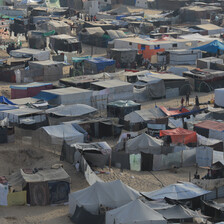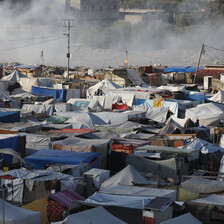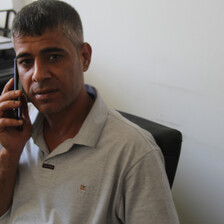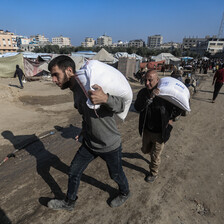The Electronic Intifada 23 June 2024

The situation is appalling for older people in Gaza.
APA imagesSamira was just 10 years old when the Israeli military invaded her village of Zarnouqa in May 1948, expelling its inhabitants.
She still recalls how “people rushed to the markets to get barley and wheat” during the Nakba, the ethnic cleansing of Palestine. The barley was for donkeys, the wheat for human consumption.
At first her family moved to Majdal, another area in historic Palestine. It was seized by Israel in November 1948.
The family then headed to the southern Gaza area of Khan Younis.
They were provided with a tent and remained in Khan Younis for a few months before going to Maghazi, central Gaza.
The family lived in a mud hut for a while. When it collapsed due to heavy rains, they found temporary accommodation before Samira’s father built a house for them.
“There was a large area around the house where we planted roses and trees,” she said. “We would sit there and drink tea.”
In 1957, Samira married her cousin, a fruit and vegetable seller.
To supplement his meager income, Samira sometimes did sewing work.
Two of Samira’s children, Ruqaya and Amal, died when they were very young. Nine others – six boys and three girls – survived.
Gruesome
The family suffered greatly from the Israeli occupation of Gaza, which began in June 1967.
In 1985, Samira’s son Fadi was injured in the eye when Israeli forces opened fire on a mosque where he and many others were praying. Fadi needed to undergo a procedure that could not be arranged within Gaza.
It took a month before he was granted a travel permit and went to Jordan. Doctors there were unable to restore sight in his right eye.
On another occasion, the Israeli military stormed the family’s home while they were eating lunch and arrested Hamza, Samira’s eldest son. Hamza was accused of throwing stones at the Israelis and was kept in detention for a few weeks.
The family did their best to help each other. Ataf, Samira’s eldest daughter, worked as a teacher in Saudi Arabia for a few years.
The salary Ataf received proved valuable in supporting the family.
Samira’s husband died following a heart attack in 1993. Despite the many difficulties that she faced, Samira always encouraged her children to get a good education.
Now 87, Samira has lost a great deal of weight during the current genocidal war on Gaza.
She has been repeatedly displaced and forced to live in a tent.
The situation is particularly gruesome for a woman of her age, who has diabetes.
One symptom of diabetes is a need to urinate frequently. Samira does not have a bathroom near her tent.
Using a crutch, she treks to a bathroom a considerable distance away, accompanied by her children. The sound of Israel’s violence is unavoidable on these treks.
Samira rented an apartment before the war began. Israel has now destroyed that apartment.
Pain is a constant presence in her life.
If Samira eats she feels pain. If she is hungry she feels pain.
Samira used to visit the doctor for regular checkups. As Gaza’s healthcare system has been directly attacked and placed under the worst imaginable strain, Samira has not been able to have proper medical assistance.
And so her pain gets worse and worse.
Tasneem Elholy is a dentistry graduate based in Gaza.





